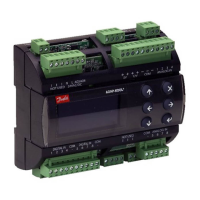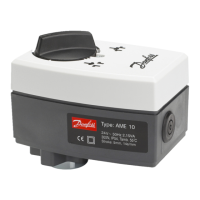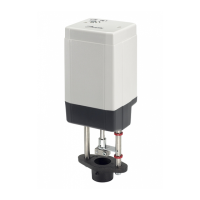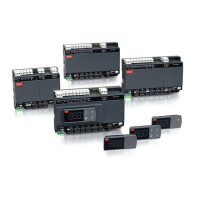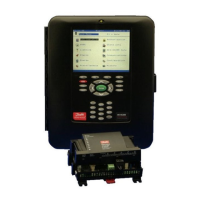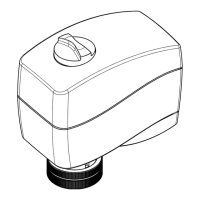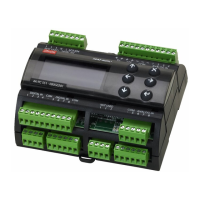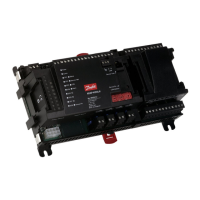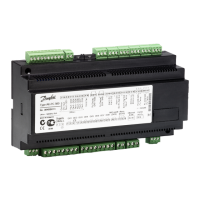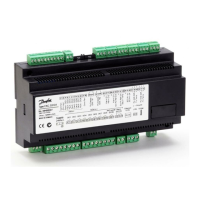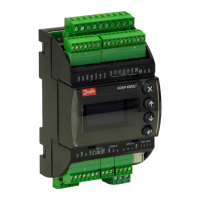6 How to Programme the Frequency Converter
6.1 How to Programme
6.1.1 Parameter Set-Up
Group Title Function
0- Operation and Display Parameters used to program the fundamental functions of the frequency converter and the LCP includ-
ing: selection of language; selection of which variables are displayed at each position in the display (e.g.
static duct pressure or condenser water return temperature can be displayed with the setpoint in small
digits in the top row and feedback in large digits in the centre of the dispay); enabling/disabling of the
LCP keys/buttons; passwords for the LCP; upload and download of commissioned parameters to/from
the LCP and setting the built in clock.
1- Load / Motor Parameters used to configure the frequency converter for the specific application and motor including:
open or closed loop operation; type of application such as compressor, fan or centrifugal pump; motor
nameplate data; auto-tuning of the drive to the motor for optimum performance; flying start (typically
used for fan applications) and motor thermal protection.
2- Brakes Parameters used to configure braking functions of the frequency converter which although not common
in many ADAP-KOOL applications, can be useful on special fan applications. Parameters including: DC
braking and resistor braking.
3- Reference / Ramps Parameters used to program the minimum and maximum reference limits of speed (RPM/Hz) in open
loop or in actual units when operating in closed loop; digital/preset references; jog speed; definition of
the source of each reference (e.g. which analog input the reference signal is connected to); ramp up
and down times and digital potentiometer settings.
4- Limits / Warnings Parameters used to program limits and warnings of operation including: allowable motor direction; min-
imum and maximum motor speeds ; torque and current limits to protect the pump, fan or compressor
driven by the motor; warnings for low/high current, speed, reference, and feedback; missing motor
phase protection; speed bypass frequencies including semi-automatic setup of these frequencies (e.g.
to avoid resonance conditions on cooling tower and other fans).
5- Digital In / Out Parameters used to program the functions of all digital inputs, digital outputs, relay outputs, pulse inputs
and pulse outputs for terminals on the control card and all option cards.
6- Analog In / Out Parameters used to program the functions associated with all analog inputs and analog outputs for the
terminals on the control card and General Purpose I/O option (MCB108) (note: NOT Analog I/O option
MCB109, see parameter group 26-00) including: analog input live zero timeout function (which for ex-
ample can be used to command a cooling tower fan to operate at full speed if the condenser water return
sensor fails); scaling of the analog input signals (for example to match the analog input to the mA and
pressure range of a static duct pressure sensor); filter time constant to filter out electrical noise on the
analog signal which can sometimes occur when long cables are installed; function and scaling of the
analog outputs (for example to provide an analog output representing motor current or kW to an analog
input of a DDC controller) and to configure the analog outputs to be controlled by the BMS via a high
level interface (HLI) (e.g. to control a chilled water valve) including ability to define a default value of
these outputs in the event of the HLI failing.
8- Communication and Options Parameters used for configuring and monitoring functions associated with the serial communications /
high level interface to the frequency converter
14- Special Functions Parameters used to configure special functions of the frequency converter including: setting of the
switching frequency to reduce audible noise from the motor (sometimes required for fan applications);
kinetic back-up function (especially useful for critical applications in semi-conductor installations where
performance under mains dip/mains loss is important); mains imbalance protection; automatic reset (to
avoid the need for a manual reset of Alarms); energy optimisation parameters (which typically do not
need changing but enable fine tuning of this automatic function (if necessary) ensuring the frequency
converter and motor combination operate at their optimum efficiency at full and partial load conditions)
and auto-derating functions (which enable the frequency converter to continue operation at reduced
performance under extreme operating conditions ensuring maximum up time).
15- FC Information Parameters providing operating data and other drive information including: operating and running hour
counters; kWh counter; resetting of the running and kWh counters; alarm/fault log (where the past 10
alarms are logged along with any associated value and time) and drive and option card indentification
parameters such as code number and software version.
16- Data Readouts Read only parameters which display the status/value of many operating variables which can be displayed
on the LCP or viewed in this parameter group. These parameters can be particularly useful during com-
missioning when interfacing with a BMS via a high level interface.
18- Info & Readouts Read only parameters which display the last 10 preventative maintenance log items, actions and time
and the value of analog inputs and outputs on the Analog I/O option card which can be particularly useful
during commissioning when interfacing with a BMS via a high level interface.
20- FC Closed Loop Parameters used to configure the closed loop PI(D) controller which controls the speed of the pump, fan
or compressor in closed loop mode including: defining where each of the 3 possible feedback signals
come from (e.g. which analog input or the BMS HLI); conversion factor for each of the feedback signals
(e.g. where a pressure signal is used for indication of flow in an AHU or converting from pressure to
temperature in a compressor application); engineering unit for the reference and feedback (e.g. Pa, kPa,
m Wg, in Wg, bar, m3/s, m3/h, °C, °F etc); the function (e.g. sum, difference, average, minimum or
maximum) used to calculate the resulting feedback for single zone applications or the control philosophy
for multi-zone applications; programming of the setpoint(s) and manual or auto-tuning of the PI(D) loop.
Table 6.1: Parameter Groups
ADAP-KOOL
®
Drive AKD 102 High Power 6 How to Programme the Frequency Converter
MG.11.O1.02 - ADAP-KOOL
®
is a registered Danfoss trademark
65
6

